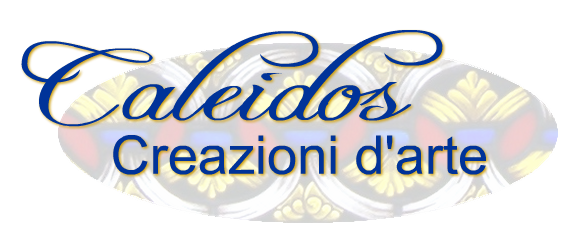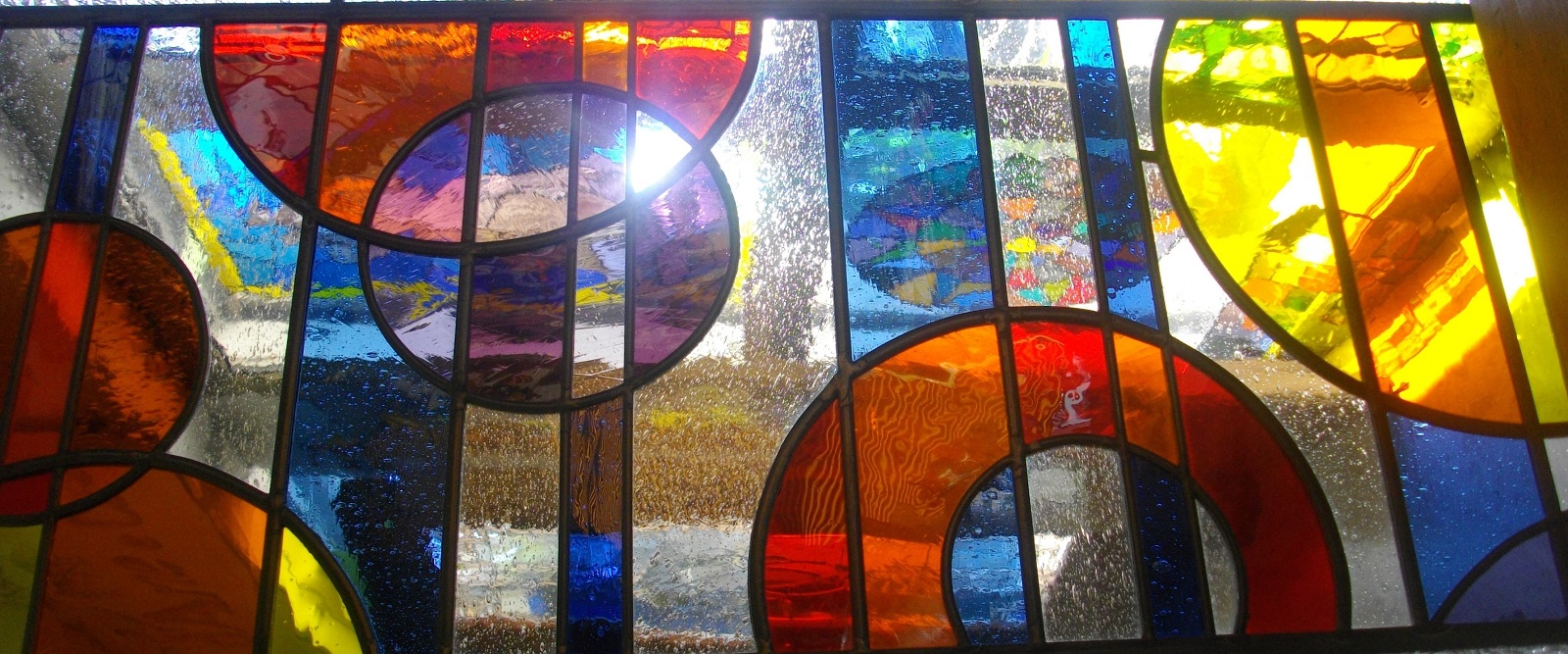These are two very different methods of linking together the coloured glass that make up a stained glass window. The first phase, which is the same for both techniques, requires making a drawn scale model of the pane which will then be reproduced in the actual size required (the cartoon). From this life-size drawing will come the individual shapes of each individual piece of glass: these are made using special double bladed scissors which remove the exact thickness which will be taken up by the lead came or the copper foil Tiffany tape depending on the technique chosen. The individual glass pieces will then be cut based on these models and from this moment the two techniques go their different ways.
If you are using the Tiffany technique you will need to attach the sticky foil tape securely all the way round the edge of each piece. Once this done all the pieces of foiled glass are placed in their appropriate position on the cartoon to make the entire stained glass window and then each length of copper is soldered to the adjoining pieces using tin solder. If you want to darken the silvery tin solder you will need to use a patina which will transform the silvery colour to a dark grey leadish colour as a result of a chemical reaction. Otherwise a copper like patina can also be obtained using a different chemical.
If you want to use the lead came (or calme) technique, then all the cut pieces of coloured glass will be placed on the cartoon and will be joined using a flexible lead came which is shaped like an H on its side. The pieces are carefully fitted into the H and a drop of solder is used at each join to link each lead came to the next. The final phase involves filling any gaps to seal the window or object in order to strengthen and render the item solid – for better protection against cold, noise and water.
The choice between the two techniques is based on personal preference as well as aesthetic and functional considerations. By using the Tiffany technique you can obtain narrower soldering lines between the glass pieces compared to the lead came technique given that pane is quite thin (4/5mm). A stained glass window joined using the lead came techniques will have thicker panes (6/7mm) will be more elastic and will thus be better for doors and large windows which tend in general to placed under greater strain.



